Orecchiette With Sausage and Broccoli Rabe
Your folders
Your folders
/__opt__aboutcom__coeus__resources__content_migration__serious_eats__seriouseats.com__2021__03__20210301-Orecchiette-Sausag-Broccoli-Rabe-sasha-marx-14-3f4223be2cc14853bfacf729e306b985.jpg)
Ingredients
Export 9 ingredients for grocery delivery
Instructions
Bring a large pot of salted water to a boil. Meanwhile, in a large skillet, heat olive over medium heat until shimmering. Using clean hands, add sausage to skillet by pinching off 1/2- to 3/4-inch pieces and arranging in a single layer in the pan. Alternatively, add sausage to skillet all at once, then break up into pieces with a wooden spoon, spreading them out evenly in the pan. Cook over medium heat, undisturbed, until bottom side is light golden brown, about 2 minutes. Using a spoon or thin metal spatula, turn sausage pieces onto uncooked side. Add garlic, anchovy (if using), and pepper flakes, and continue to cook until fragrant and anchovy has dissolved, 30 seconds to 1 minute. Increase heat to medium-high and add wine. Bring to a simmer and cook, swirling pan and scraping up any stuck-on bits with a wooden spoon, until wine has emulsified with olive oil and mixture is slightly reduced, about 30 seconds. Turn off heat. Add broccoli rabe stalk pieces (with florets attached) to boiling water and cook until stalks are barely tender, 1 minute 30 seconds to 2 minutes. Using a spider skimmer, drain well and transfer to a plate. Add rabe leaves to boiling water and cook until barely tender, about 1 minute. Drain, while keeping boiling water in the pot; transfer rabe leaves to plate with blanched stalks, keeping them separate. Using a sharp knife, cut stalks and florets into 1 1/2-inch pieces, then combine with blanched leaves; set rabe aside. Add orecchiette to boiling water and cook, stirring frequently for first 30 seconds to prevent pasta from sticking. Once pasta has cooked for 5 minutes, transfer 1 cup (240ml) of pasta cooking water to skillet along with broccoli rabe; continue cooking pasta. Return skillet to high heat and bring to a boil, swirling and stirring pan constantly until cooking water emulsifies with olive oil mixture, 1 to 2 minutes. Meanwhile, continue cooking pasta until it is softened on the exterior, but well shy of al dente and still uncooked in the center (about 3 minutes less than the package directions). Using a spider skimmer, transfer pasta to skillet. Alternatively, drain pasta using a colander or fine-mesh strainer, making sure to reserve at least 2 cups (475ml) pasta cooking water. Cook on high heat, stirring and tossing rapidly, until pasta is al dente and sauce is thickened and coats noodles, 2 to 3 minutes, adding more pasta cooking water in 1/4 cup (60ml) increments as needed. At this point, the sauce should just pool around the edges of the pan; it will continue to tighten up in the time it takes to plate and serve, so make sure it's a little looser than the ideal serving consistency. Remove from heat, add 3/4 of grated cheese, and stir rapidly to incorporate. Season with salt to taste. Serve immediately, passing remaining grated cheese at the table.
Top similar recipes
Curated for youYour folders

 788 views
788 viewsOrecchiette with Sausage and Brocco...
skinnytaste.com
5.0
(21)
20 minutes
Your folders

 245 views
245 viewsOrecchiette With Broccoli Rabe and ...
food.com
5.0
(4)
20 minutes
Your folders
 73 views
73 viewsOrecchiette with Sausage and Brocco...
skinnytaste.com
Your folders
 183 views
183 viewsOrecchiette with Broccoli Rabe and ...
foodnetwork.com
2.3
(3)
Your folders

 444 views
444 viewsOrecchiette with Broccoli Rabe & Sa...
foodnetwork.com
35 minutes
Your folders
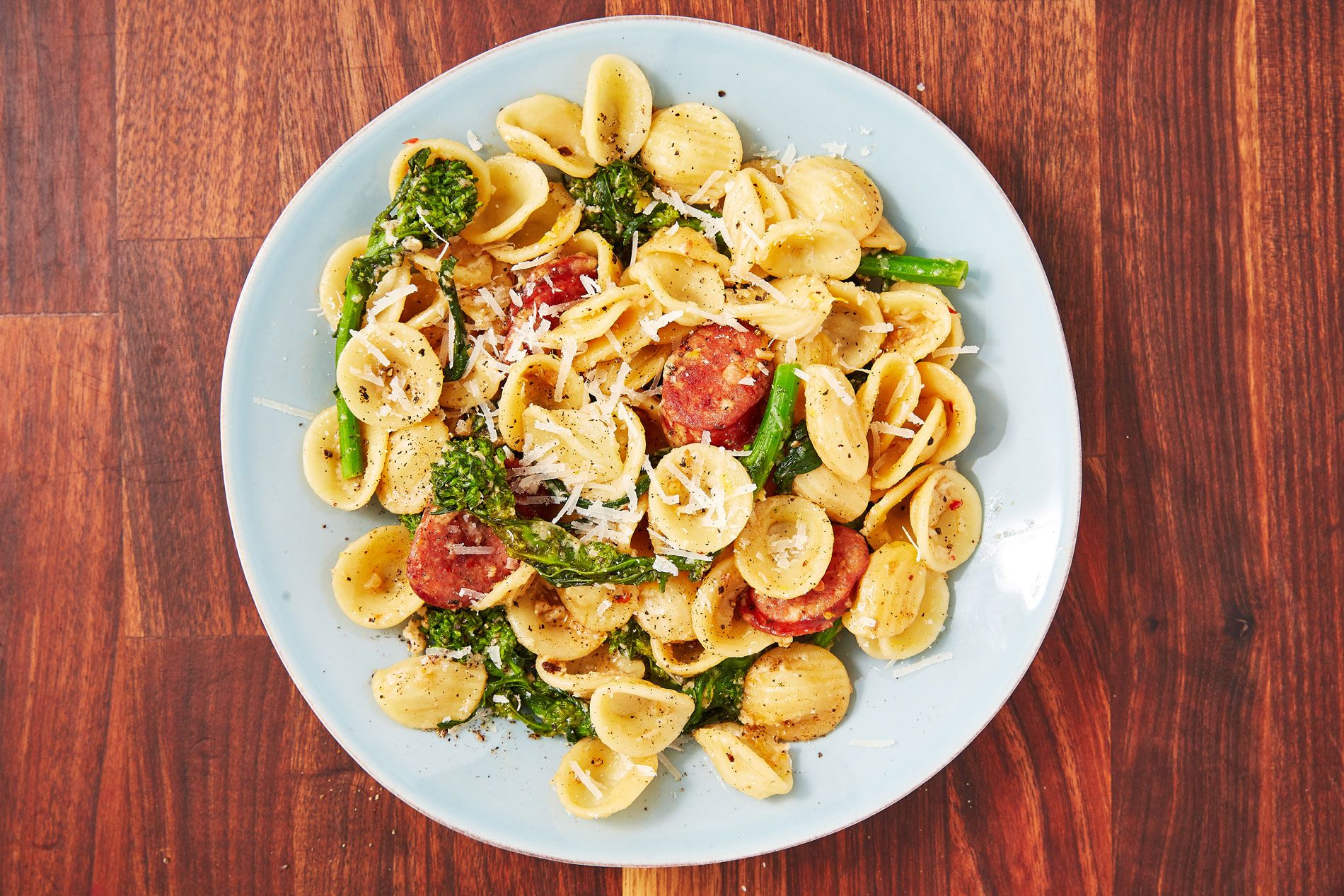
 305 views
305 viewsOrecchiette With Broccoli Rabe
delish.com
5.0
(3)
Your folders
 88 views
88 viewsOrecchiette with Broccoli Rabe
epicurious.com
Your folders

 250 views
250 viewsOrecchiette with broccoli rabe
giallozafferano.com
15 minutes
Your folders
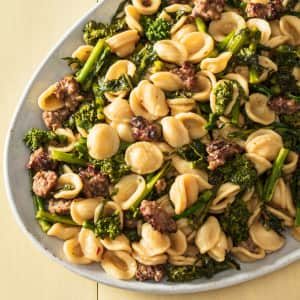
 139 views
139 viewsInstant Pot Orecchiette with Brocco...
americastestkitchen.com
4.2
(45)
Your folders

 434 views
434 viewsLidia's Orecchiette with Broccoli R...
cento.com
5.0
(2)
25 minutes
Your folders
 267 views
267 viewsOrecchiette with Broccoli Rabe Pest...
foodnetwork.com
3.4
(43)
12 minutes
Your folders

 491 views
491 viewsOrecchiette With Broccoli Rabe and ...
cooking.nytimes.com
5.0
(44)
Your folders
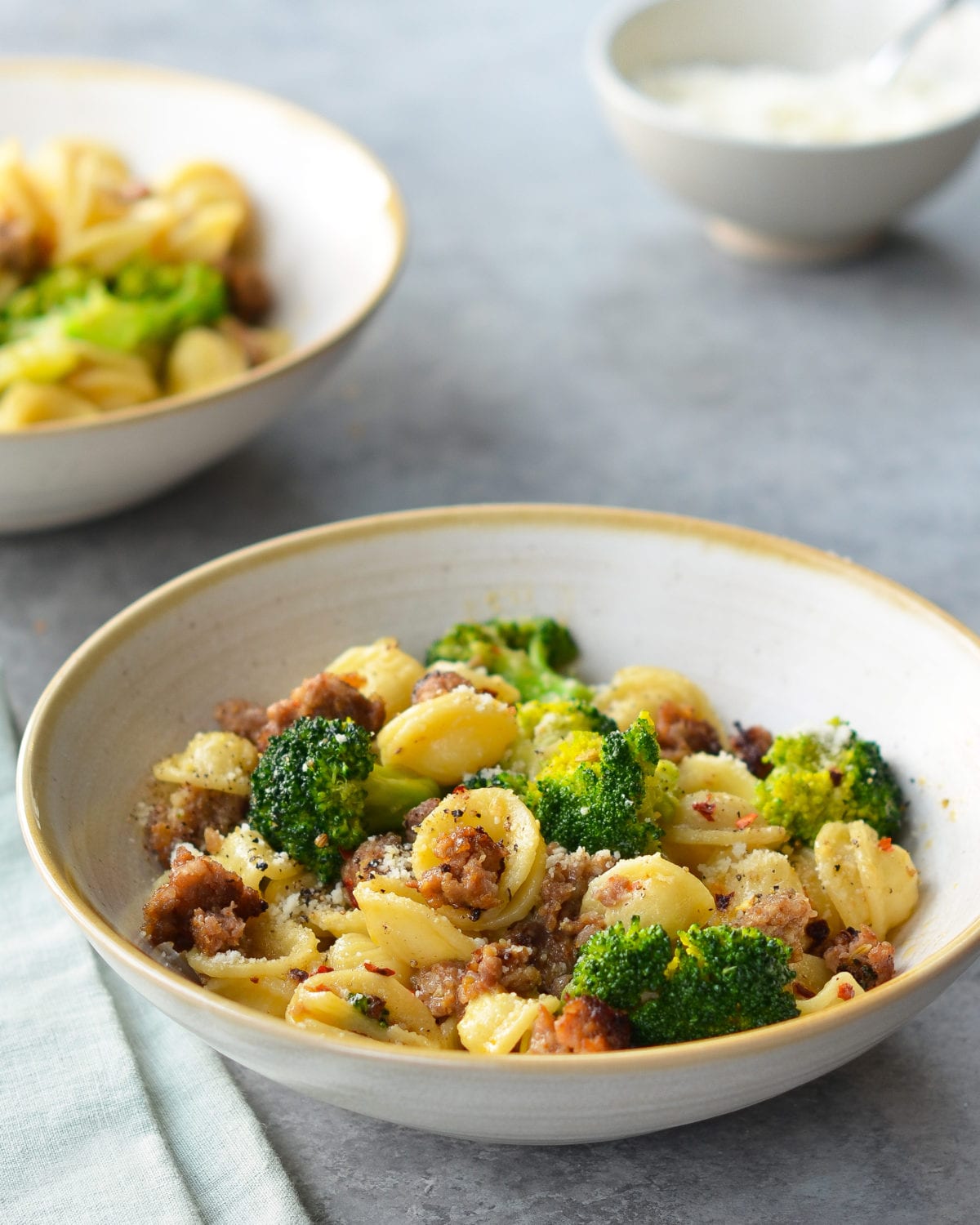
 551 views
551 viewsOrecchiette with Sausage and Brocco...
onceuponachef.com
5.0
(251)
Your folders
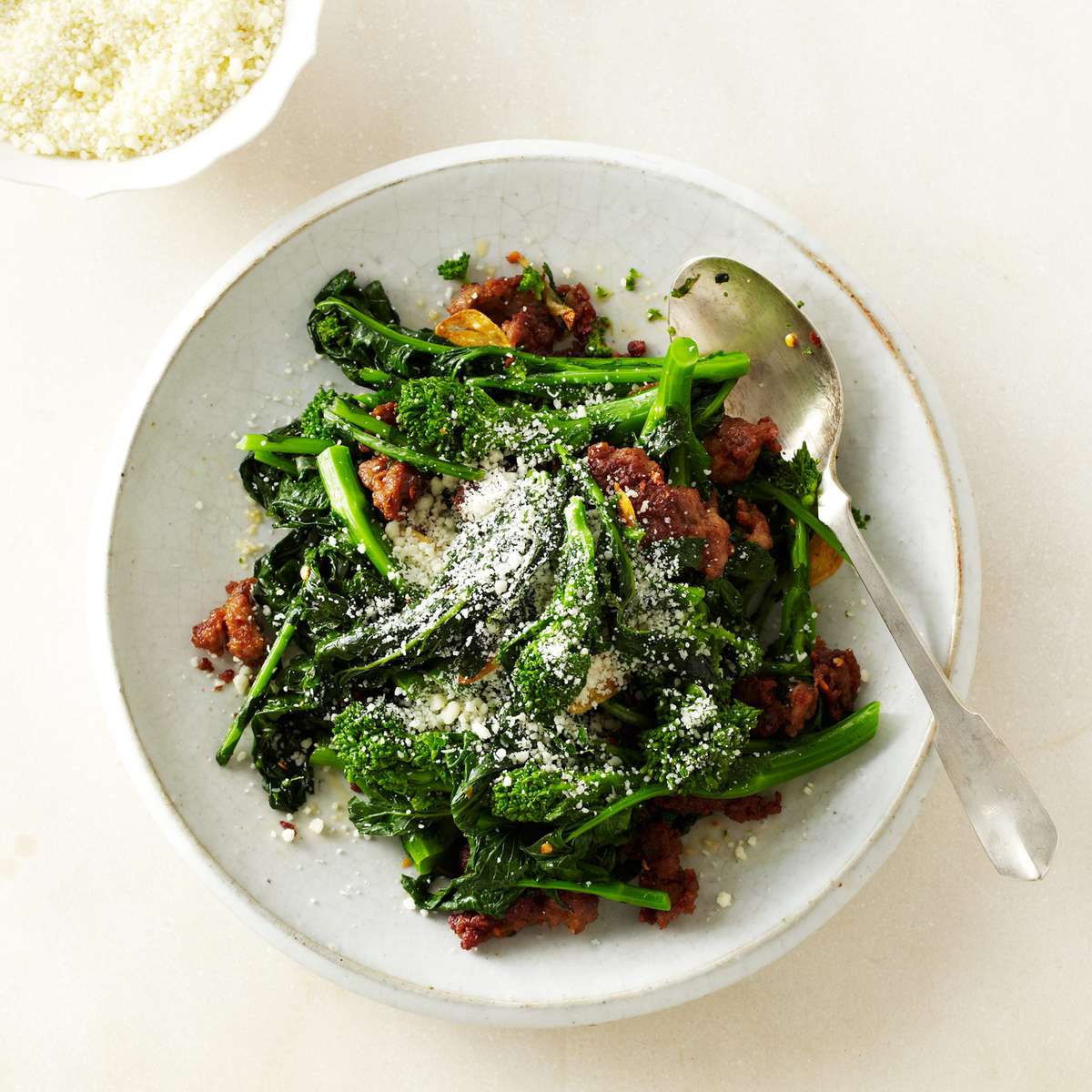
 276 views
276 viewsBroccoli Rabe with Sausage
foodandwine.com
Your folders

 231 views
231 viewsRigatoni With Sausage and Broccoli ...
goodhousekeeping.com
Your folders

 239 views
239 viewsSausage and Broccoli Rabe with Pole...
myrecipes.com
Your folders
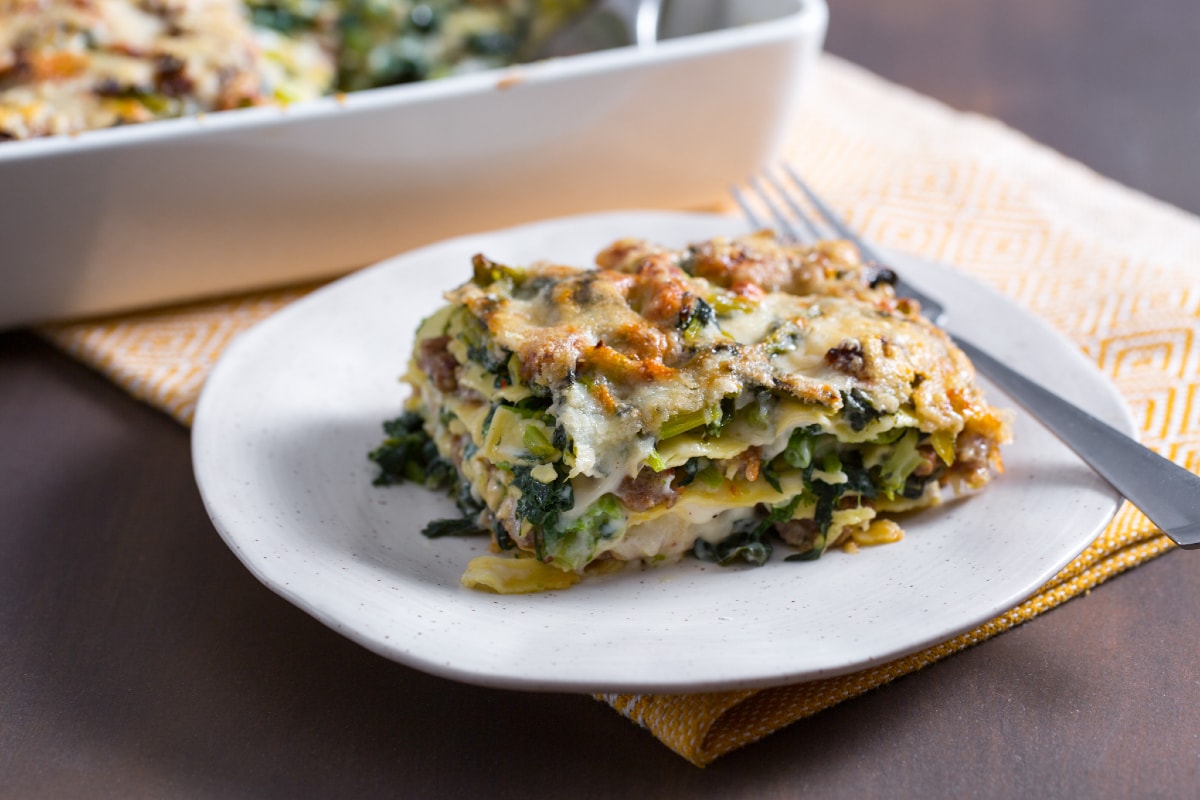
 107 views
107 viewsLasagna with Broccoli Rabe and Saus...
giallozafferano.com
4.4
(49)
60 minutes
Your folders

 274 views
274 viewsOrecchiette con Salsiccia e Cime di...
seriouseats.com
Your folders

 395 views
395 viewsBroccoli Rabe and Sausage Pizza
cooking.nytimes.com
5.0
(54)